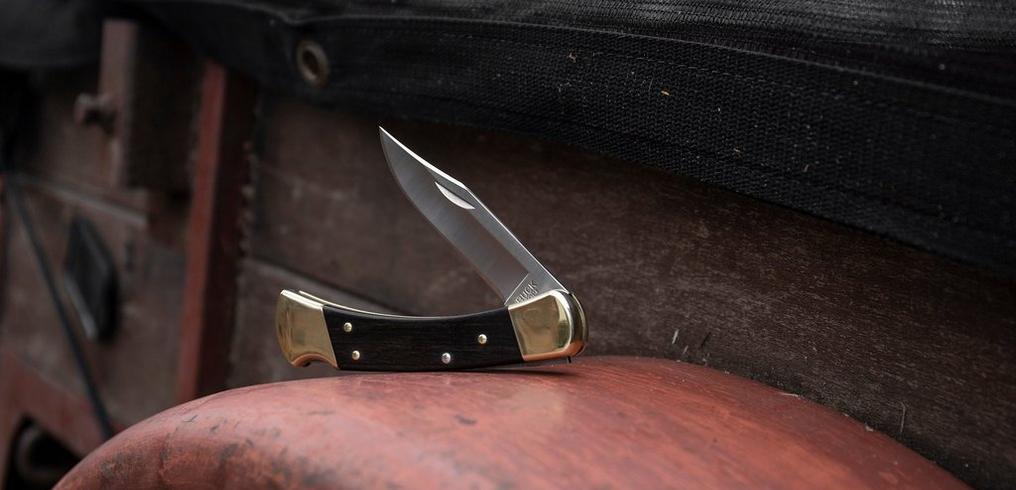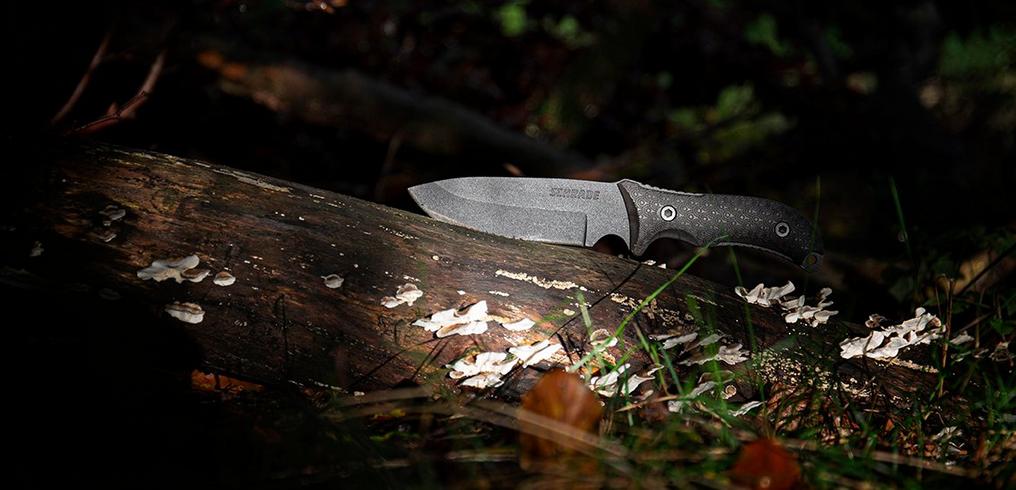How do you disassemble a pocket knife in the right way?
Disassembling and reassembling a pocket knife is an art form on its own. It may be time to replace a part when you 'pimp' your knife, or for a proper cleaning. We, however, often see this go wrong. With stripped screws or other problems as a result. That is why we love to give you some tips on how to properly disassemble a knife.
Disclaimer
Before we begin: you always disassemble a pocket knife at your own risk. Knivesandtools and/or the manufacturer of the pocket knife or the parts you use are not liable for any damage done to the parts, injuries or consequential damage.
Also, for many brands the warranty expires the moment you start tinkering on the knife yourself. So before you get going check the warranty conditions on the website of the manufacturer or the manual that comes with the knife.
Step 1: Take your time
Quickly tighten a screw? Quickly finish that cleaning job before dinner? Please don't! You need to take your time, otherwise you might as well immediately stop. Haste makes waste, and the same applies here. Take your time, sit down at your work station or kitchen table. Don't stress. Take it easy.
Step 2: Good tools are half the job
It is not only a saying, it is simply true. It helps when you own a good set of screwdrivers. Pocket knives are often secured with the tiniest screws. Which in turn require small bit sizes. Sizes you often see are: Torx T6, T8 and T10. With it you can handle most of the pocket knives.
Keep in mind that, despite these recurrent sizes, other sizes can also be used. Sometimes you expect, upon the first try, that a T6 bit will do just fine. Until you use the T7, test it, and notice that it is much tighter. So, take your time, and always try a size bigger, just in case. To know for sure you are using the right one.
Treacherous: Allen
We would like to warn you about Allen screws, just in case. You namely always run the risk that you are dealing with allen screws in inch sizes. Rick Hinderer Knives, for instance, uses screws with bit size 5/64". You might think you are using the right Allen key, but it turns out to be metric. You do turn the screws, but you secretly also enlarge them. The same applies to Chris Reeve Knives, even though these come with good Wiha Allen keys.
Choose the right brand
You have now determined which sizes you need. We now advise you to use screw bits or screwdrivers from a good brand. Good bits fit better in the screws and won't damage them as easily, For this the following truly applies: cheap is expensive.
Examples of good brands are Wiha and Wera.
Step 3: Let's get started! (Well almost)
Good bits, let's get started! Well: hold on just a little bit. We namely like to take another precaution. To make sure you won't scratch the screws more than necessary we have a great trick: grab a piece of a plastic bag. Seriously. Simply a piece of plastic of a plastic bag. You put it on top of the screw and push the screw bit in it. The plastic cushions a little between the screwdriver and the screw to make sure you are less likely to see damage to the screws. Especially when you are dealing with colourful screws this is a game changer.
Step 4: The right technique
Screw bit ready? Plastic ready? Let's get to work! But do it the right way. Properly place the screwdriver on the head of the screw. Make sure the screwdriver is straight. Now you can gently turn the screwdriver. Gently build up the pressure, and do not work like a man possessed. Unable to loosen it? Stop! Forcing it is namely never a good idea.
Step 5: Pay attention to Loctite
Ok, so you are unable to loosen the screw? Stop trying to loosen it. Yes, we just stop. Chances are we are dealing with Loctite or any other screw securing agent. This is a type of glue manufacturers add to the screw wire to prevent screws from loosening.
Sometimes a lot of Loctite is used, or a strong type of Loctite, making it hard to loosen the screw. So what if you push on? Chances are you destroy the screw. No: this has little to do with the quality of the screws. Because 'soft' screws don't mean 'bad quality'. Titanium screws are namely a premium characteristic, but also relatively soft. So what will we do to deal with the Loctite? Well: there are a number of options.
A properly-aimed tap
What you can do is lay the knife flat on the table and place the screwdriver vertically in the screw. Use your hand and tap the back of the screwdriver. In some cases this is already enough to break the Loctite. Do, however, make sure the screwdriver is properly secured in the screw. We cannot say it often enough. Also good to know: put something soft underneath the knife. Like a mouse pad, for instance. Or a piece of leather.
Heat weakens
Another option to make sure you are not bothered by Loctite is heating it up. Now I hear you think: but how? The Loctite is a part of the screw wire right? Yes! So you need to do this right.
There are people who used a blow-dryer or even a paint burner. We don't prefer using either of those methods. Yes, the hot air will heat up the screws and soften the Loctite. But with plastic handles you could also end up melting the scales. Hold your hand close to a blow-dryer, quite hot right?
We have a better way! We use a cup of hot water. Not boiling water! Simply hot water from the tap. Put the knife inside for a couple minutes and, in many cases, you will notice that the Loctite has gotten nice and soft. Loosening a screw will be a piece of cake after that. Because the water completely envelops the screws, the heat transfer is excellent. In addition, plastic scales won't heat up. Is it still difficult to loosen the screw? Leave it to soak a little longer. Or combine this technique with another tap on the back of the screwdriver as mentioned above.
Please note: make sure that after disassembling the pocket knife all parts are nice and dry when you assemble it again.
Hot technique for experts
Another option is a technique that requires a little more skill and tools. If you namely know what you are doing you can, VERY GENTLY, use a soldering iron to heat up the screw that is stuck. As such you only heat up the screw that is stuck, and nothing else.
There are a few important things to take into account here: is the screw enhanced with a coating? If so, don't do this because you will burn the coating on the screw. Titanium screws? Don't, the heat can namely anodize the titanium of the screw. The same applies to a titanium handle around the screw, if you are not careful. For a plastic handle or one made from a composite material you need to be careful not to burn or melt the handle. We also recommend properly cleaning the tip of the soldering iron. You, after all, don't want to tin-plate your screws.
It a method that is rather prone to errors. So be very careful and don't do it if you don't know what you are doing. It is, however, also the method for screws that are properly secured. But you do this at your own risk. Be careful.
Step 6: Organize
You have loosened the screws. Great! Now it is important to not lose them. We recommend, before disassembling the knife, drawing an outline of it on paper. Also draw the screws and put them in the right place on the paper when you remove them. This is how you make sure all screws stay in the right place, which (often) makes it easier to adjust them when assembling.
Step 7: Cleaning and/or exchanging and/or lubricating
The knife is disassembled, now it is time to do what you took the knife apart for. What you basically always do is: cleaning. Grab a tissue or paper towel and carefully rub everything clean. For ball bearings, make sure you don't lose the balls and for phosphor bronze washers, don't bend or reshape them.
Are you thinking of replacing the screws? A nice set from Flytanium, for instance. We recommend trying them 'on dry land' first. Place the screws into the bushings to make sure they fit properly. As such you make sure you don't force the screw wire as you assemble the knife. Especially if you are also planning on replacing the scales, it is good to know in advance that everything fits.
Done everything you needed to do? It is time to lubricate. We love the all-round, versatile Nano-Oil 10W. But for phosphor bronze washers you can't beat Chris Reeve Knives Fluorinated Grease. And some knives with ball bearings work great with Nano Grease, from Nano-Oil. For all these lubricants the following applies: less is more! Too much grease only attracts more dirt. Something you want to avoid. Also don't forget the detent ball.
Step 8: Assembly
Everything nice and clean? Grease at the ready for all moving parts? It is time to put everything back together. Make sure you gently put everything back together. Hand-tight is usually tight enough. If need be use a tiny drop of screw securing agent. To properly centre the blade you might need to vary the tightening of the screws.This takes some getting used to and trying out.
Step 9: the double-check
Before you start using your knife again it is important to double-check if opening your knife is still easy. And perhaps even more importantly: check to see if the lock works. You, after all, don't want the knife to accidentally close during use because you forgot a part, or didn't properly tighten a screw.
That's it: it is done and nicely assembled. Well done!
A couple final remarks
We cannot say it often enough: only disassemble a knife when you really need to. You can often also clean a pocket knife without taking it apart.
When you disassemble and assemble a knife, don't force anything. For many brands it is not that easy to get new screws. And when you damage the screws yourself it is almost never a part of the warranty.
Warranty in itself is a thing: for many brands the warranty expires as soon as you take the knife apart. So we will repeat it once more: check the website of the manufacturer beforehand to learn more about their terms and conditions.
Not every knife is easy to (dis)assemble! Some knives are a lot more difficult in terms of construction than you might initially expect. We have seen knives where the screw on the outside might look like the pivot, but merely only functions as a screw to secure the scale, while a type of bolt underneath the scale functions as the pivot. The springs of an Axis lock can also be tricky. Not to mention some versions of an assisted opener.

?%24center=center&%24poi=poi&%24product-image%24=&fmt=auto&h=490&poi=%7B%24this.metadata.pointOfInterest.x%7D%2C%7B%24this.metadata.pointOfInterest.y%7D%2C%7B%24this.metadata.pointOfInterest.w%7D%2C%7B%24this.metadata.pointOfInterest.h%7D&scaleFit=%7B%28%24this.metadata.pointOfInterest%29%3F%24poi%3A%24center%7D&sm=c&w=1016)





?%24center=center&%24poi=poi&%24product-image%24=&fmt=auto&h=490&poi=%7B%24this.metadata.pointOfInterest.x%7D%2C%7B%24this.metadata.pointOfInterest.y%7D%2C%7B%24this.metadata.pointOfInterest.w%7D%2C%7B%24this.metadata.pointOfInterest.h%7D&scaleFit=%7B%28%24this.metadata.pointOfInterest%29%3F%24poi%3A%24center%7D&sm=c&w=1016)